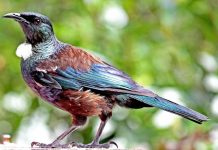Looking after your cat responsibly ensuring that they are well cared for and do not threaten wildlife is an important part of helping to preserve our natural heritage. Here are some tips on how you can help:
• Ensure that your cat always has access to good quality food
• Keep your cat inside at night so that it is less likely to prey on wildlife (and get into fights)
• Provide toys and regular playtime so that your cat is well entertained and exercised and less likely to need to hunt
• For those cats that do hunt wildlife, a bell may be placed on their collar to help warn native wildlife about the cats’ presence. Another option is a special “cat bib” that can help to prevent wildlife being caught.
• Never abandon unwanted cats. It is unfair to leave them to fend for themselves and it is a threat to our wildlife.
• Unless you are a responsible cat breeder, always have a new cat desexed. This will help to prevent unwanted kittens and cats and also help to reduce undesirable behaviour like urine spraying and territorial fighting.
By Dr Liza Schneider, ARRC Wildlife Trust www.arrc.org.nz
I write for this magazine because educating and empowering people with information to help animals, our environment and people is important to all of us.










































































